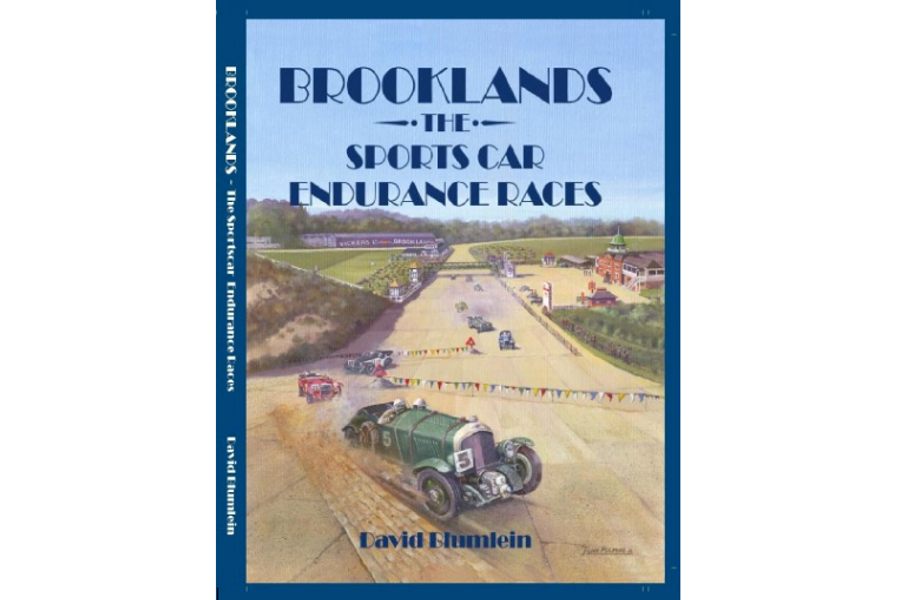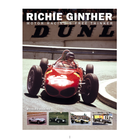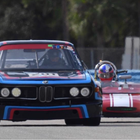Bookshelf: Brooklands: The Sports Car Endurance Races by David Blumlein
- 27 Mar 2020
- Bookshelf
 By Paul Tarsey
By Paul Tarsey
"I kept on looking round for a book about the Brooklands endurance races and couldn't find one" explained David Blumlein as he started talking about his latest labour of love. "It was only when I realised there was no such thing that I decided to write it myself.”
Brooklands is one of those now-defunct race tracks which most people know something about but very few know 'The Track' (as it was always known by the beautiful people who were there) in any detail. The Brooklands Society and the glorious museum keep the dream alive but this work gives an additional insight into that world. This book will fill in a lot of gaps for enthusiasts worldwide.
It wasn't all perfect anyway. The track had been somewhat cheaply built, the Locke King family having underestimated the amount of money it would cost to create this vast civil engineering monument within their Weybridge estate. The ensuing financial crisis caused the actual poorly finished race track to be hard on cars and drivers alike. The famous mantra of 'the right crowd and no crowding' was indeed true, but for many of that crowd, the motor racing was little more than a backdrop extension to the social season rather than the reason to travel to Surrey.
David Blumlein's background as a schoolmaster comes through loud and clear. The work is scrupulously researched and very obviously the many facts and figures have been laid out in ways which is both informative and interesting. Indeed the author started our conversation, as a teacher would, at the very beginning by defining just what makes a sports car.
talked about the American-built Mercer Raceabout as perhaps being a very early iteration. Having been built in New Jersey these cars were driven to their race debut at the Indianapolis 500 and then, once they had competed in 'the 500' were driven home again, a cross-country journey on dirt roads, of over 1400 miles, plus the race distance itself!.
The author, warming to his subject, said that surely the absolute definition of a sports car came from the late Cyril Posthumous, who said that a sports car was one which 'put performance before carrying capacity'. That definition probably held true until the introduction of the first 'hot hatch' some seventy years later!
In the early days at Brooklands the majority of races were short handicap events rather than the endurance competitions covered in this book. Racing had been designed to mimic the horseracing equivalent, and indeed in the first season of racing in 1907, drivers wore jockeys' silks to identify not only themselves but also the owner of the car, exactly as would happen at Ascot. This effort to draw the horse-racing crowd saw the events become known as the 'Motor Ascots'.
It was SCH 'Sammy' Davis who realised that Le Mans in particular was growing in stature and that there was a place at the world's first purpose-built race track for endurance racing. Even then, racing on the public roads was not allowed in the United Kingdom and so, unlike Spa or Le Mans, a 24-hour race was going to need to run on a race track.
There was an element of endurance racing at Brooklands even before the First World War but these tended to be out and out racing cars and race distances did not include night racing, and it was only in 1927 that sports car endurance racing started at Brooklands. Local resistance may seem like something which we have to battle with in the 21st-century but the residents of the select area of Weybridge were incensed by the idea of a 24 hour race disturbing their enjoyment of leafy suburbia and racing had to finish at 6 o'clock every evening to preserve the local tranquility. Action could not start until the following morning.
The way round this was to have two twelve-hour races and this is how the Brooklands Double Twelve came about. The first race was on the Saturday and the cars were placed in parc ferme overnight and began racing again the following morning. However we must remember that communications were not to the level that we would expect today and the somewhat sparse crowd was hopelessly lost as to who was leading the race and just what was happening.
Brooklands reputation as a car breaker saw the fast disintegrating banking take its toll and consequently when the Double Twelve resumed very few cars came out of perc ferme on the Sunday morning. This was because they were all being repaired by the mechanics after their strenuous run on the previous day. Even when the cars did return to the fray it wasn't always at competitive speeds and there was a period first thing that morning which can only be viewed as testing, where drivers would run round in second gear simply to make sure everything was alright and that nothing was likely to break or fall off.
After satisfying themselves of the safety of the repairs they would rejoin the race proper. There were even stories of the Alfa Romeo mechanics warming the oil in parc ferme to pour into the cars ready for resumption of competition on Sunday morning. Some things never change!
Motor racing was very different in those days. Brooklands is famous for 'the right crowd and no crowding' but safety was never paramount. Spectators were kept back from the race track simply by wooden railings and indeed one of the public relations disasters that Brooklands faced was that spectators occasionally got injured or even killed whilst simply enjoying the racing. It was after one such fatal accident that the requirement was brought in that you had to print on the reverse of the ticket 'motor racing is dangerous' and a few disclaimer statements which, of course, still happens to this day.
Brooklands itself ran to several different layouts and these are covered in the book. The original pear-shaped banked circuit always had the start finish line where the clubhouse and pits were located and fed directly onto the members banking. The much longer Byfleet banking was at the other end (the fat end of the pear) and strangely there was a' Mountain Circuit' which used the start finish line but turned right onto the members banking using a very short and somewhat unpopular layout. The Campbell Circuit was a completely new layout utilising the members banking as part of a purpose built road course, all of which is covered in the book.
When all is said and done there were only nine long-distance sports car races ever held at Brooklands and yet there is enough to fill David Blumlein's excellent book with all sorts of facts figures, anecdotes and trivia. The book is well illustrated with many unseen photographs and has been brilliantly designed by Marcus Potts although the cover illustration (not Potts' work) perhaps lets the rest of the book down. The book is published by well-known booksellers Chater's and company and and costs £30.00. It will shortly be available via their website chaters.co.uk.
ISBN:9780995705432












